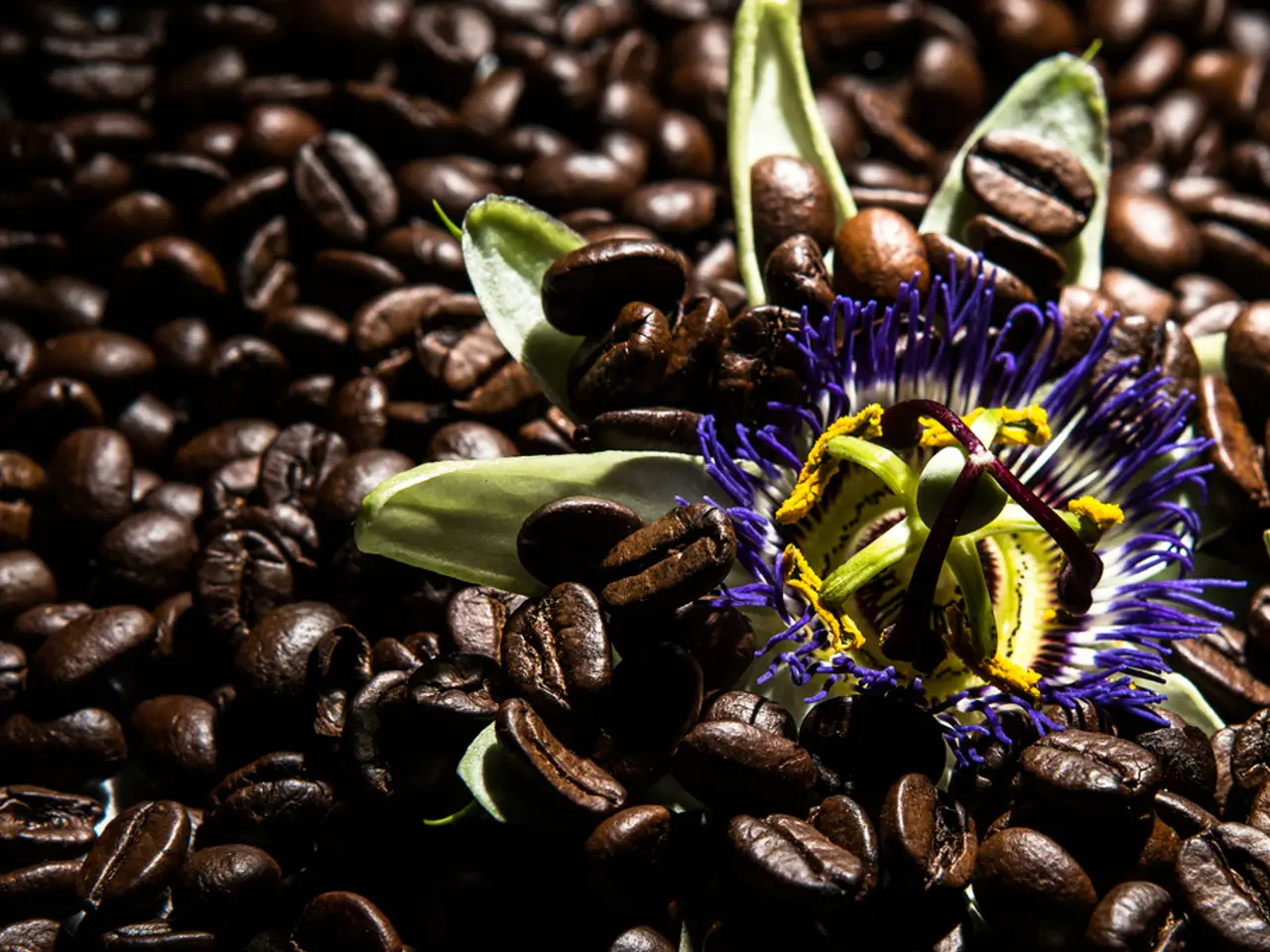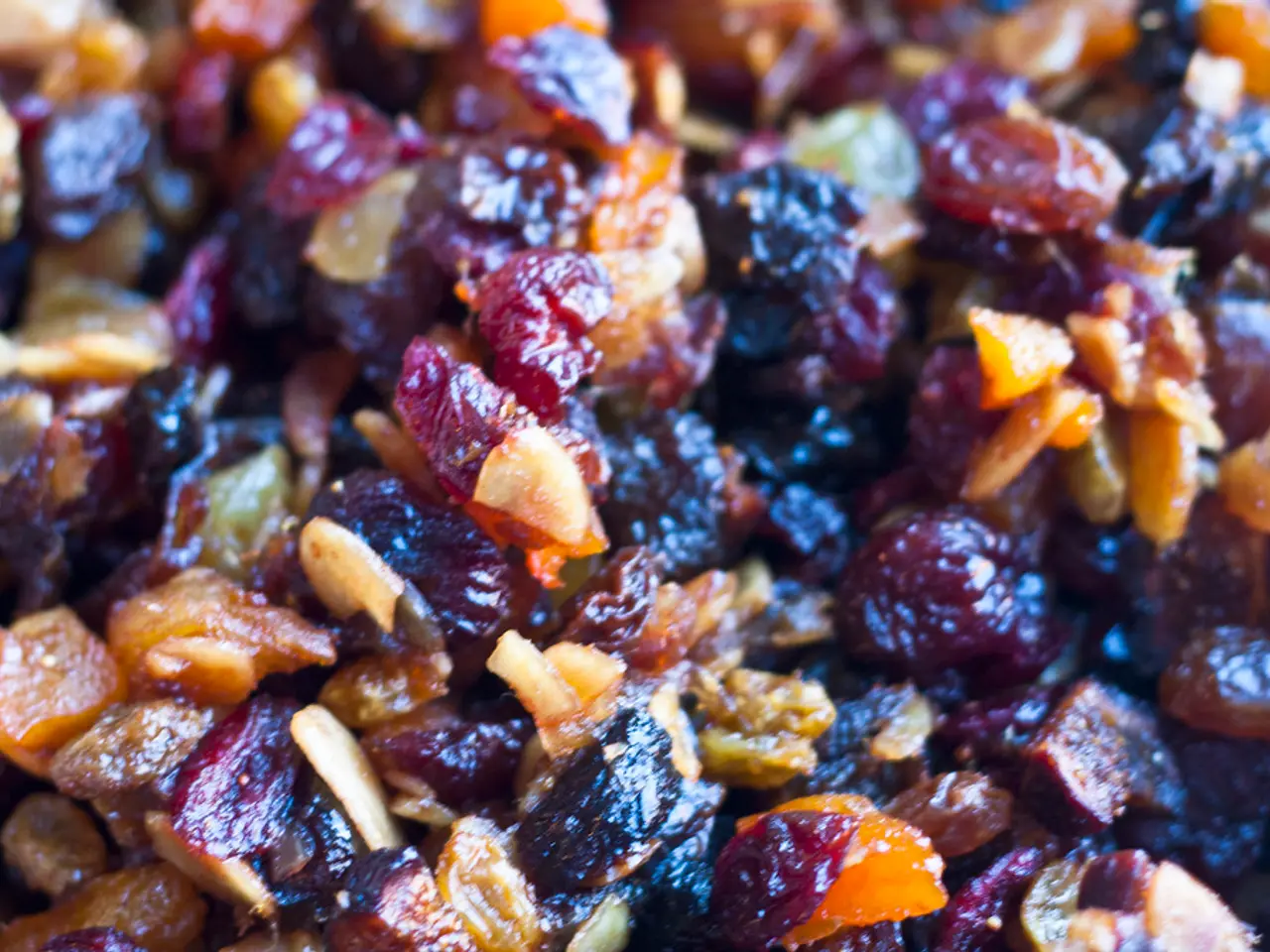Legume Advantages, Disadvantages, Cooking Methods to Embrace
Boiled garbanzo beans, also known as chickpeas, are a rich source of essential nutrients. They contain 14.5 grams of protein, 12.5 grams of fiber, and 80.4 mg of calcium, along with 78.7 mg of magnesium and 4.25 grams of fat. With a caloric content of 269 calories, these beans make a nutritious addition to any diet.
Similarly, boiled navy beans, or white beans, offer a protein content of 15 grams, 19.1 grams of fiber, and 96.6 mg of magnesium. They also contain 4.3 mg of iron and 1.13 grams of fat. With a caloric content of 255 calories, these beans are a great choice for those watching their calorie intake.
Legumes, which include beans, lentils, and green peas, are part of the Fabaceae or Leguminosae family. These plants grow in pods and are naturally low in fat, with a glycemic index generally ranging between 20 and 40. The U.S. Department of Agriculture (USDA) recommends that everyone include beans, peas, and lentils in their diet due to their variety of vitamins, minerals, fiber, and phytochemicals.
Common beans, such as kidney beans, black beans, and navy beans, are edible seeds or unripe fruit from legume plants. Other examples of legumes include soybeans, green peas, and peanuts, which are often referred to by other names. Lentils, the seeds of the plant Lens culinaris, are also considered legumes.
When it comes to cooking legumes, there are some tips to reduce antinutrients and flatulence. Soaking legumes for 6–8 hours or overnight in plenty of water softens the outer coating and reduces phytic acid, lectins, and other antinutrients that impair mineral absorption and digestion. Changing the soaking water once or twice helps remove soluble antinutrients like phytic acid and oligosaccharides responsible for gas. Using warm water and optionally adding a small amount of salt or lemon juice can further assist antinutrient reduction.
Cooking legumes thoroughly, preferably by boiling or pressure cooking, deactivates lectins and further breaks down antinutrients and oligosaccharides that cause flatulence. Avoid undercooking, especially kidney beans, since raw or partially cooked beans contain harmful lectins causing digestive issues. Sprouting legumes before cooking can further lower antinutrients and improve nutrient availability.
For those interested in the technical details, a study on soya shows that about 25 hours of soaking combined with cooking at around 101°C for about 62 minutes can reduce oxalates by over 87% and increase protein availability significantly.
In summary, the combined approach of soaking (long enough to allow antinutrient leaching and enzyme activation), changing the water, and pressure or thorough boiling cooking is the most effective practical method to reduce antinutrients and gas-causing compounds in legumes while improving their nutritional quality.
Eating legumes may offer numerous health benefits. They may lower the risk of developing diabetes, improve glycemic and lipid control in people who have diabetes, aid in weight control and less chance of obesity, reduce blood pressure, lower total cholesterol and LDL levels, and offer microbiome diversity and immune support. With their nutritional profile, legumes are a valuable addition to any balanced diet.
- Boiled garbanzo beans, or chickpeas, are a rich source of essential nutrients and make a nutritious addition to any diet due to their high protein, fiber, and mineral content.
- Navy beans, or white beans, offer a protein content of 15 grams, 19.1 grams of fiber, and various minerals, and are a great choice for those watching their calorie intake.
- Legumes, such as beans, lentils, and green peas, are part of the Fabaceae or Leguminosae family, grow in pods, and are naturally low in fat.
- Common beans, including kidney beans, black beans, and navy beans, are edible seeds or unripe fruit from legume plants, while other legumes include soybeans, green peas, and peanuts.
- To reduce antinutrients and flatulence in legumes, some tips include soaking the legumes for 6–8 hours or overnight, changing the soaking water once or twice, using warm water, and optionally adding salt or lemon juice.
- Cooking legumes thoroughly, either by boiling or pressure cooking, deactivates lectins and further breaks down antinutrients, while sprouting legumes before cooking can further lower antinutrients and improve nutrient availability.
- Eating legumes may offer numerous health benefits, including lowering the risk of developing diabetes, improving glycemic and lipid control, aiding in weight control and reducing the chance of obesity, reducing blood pressure, lowering cholesterol and LDL levels, and offering microbiome diversity and immune support. With their nutritional profile, legumes are a valuable addition to any balanced diet in the field of health-and-wellness, fitness-and-exercise, and food-and-drink, and more specifically, healthy-cooking and lifestyle choices.




